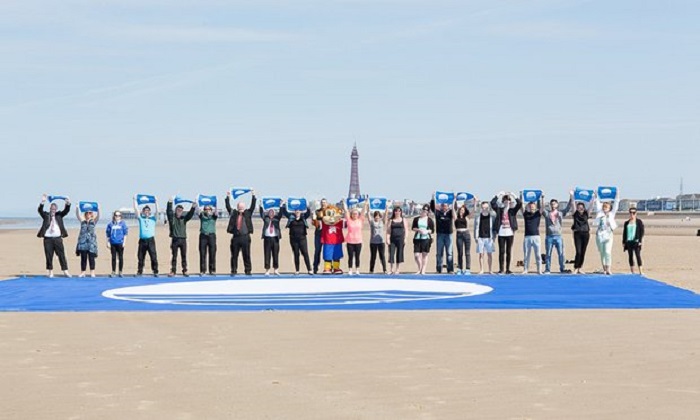95% of British beaches clean enough to swim, EU tests show

Just six of 29 waters surveyed around the Blackpool region in 1988 met the EU’s bathing water guidelines. By 2014, all of the northern seaside resort’s beaches passed the EU test, after some £1bn was spent on clean water improvements.
With the Brexit referendum fast approaching, the latest EU water check on more than 21,000 beaches around Europe’s coastline was seized on by Remain supporters as an example of what the UK stands to lose by leaving the bloc.
Stanley Johnson, the co-chair of Environmentalists for Europe, and father of high-profile Brexiteer Boris Johnson said: “In the days of the blue flag beaches in the 1960s and 70s, the old joke used to be ‘if you go to Brighton to swim, you will just be going through the motions’. It was true. You thought twice before swimming off a British beach. Today, the EU’s legislation on bathing water has led to the cleaning up of UK beaches in a big way.”
The 94.6% grade for British beaches was slightly down on the 2014 figure, when a record 99% of the UK’s coastal and inland bathing sites were found to be of excellent, good or fair swimming quality.
The European Environment Agency (EEA), which conducted the assessments, blamed the slight drop on the UK’s late implementation of a revised bathing water directive, and the counting of the last three years’ figures in the 2016 report.
A spokesman for the Department for Environment, Food and Rural Affairs (Defra) said: “Our bathing waters are cleaner than ever, with 97% [of English beaches] meeting new, tougher standards. But we’re not complacent and we’re continuing to work with water companies, local authorities and communities to drive up standards on beaches and lakes across England.”
Since 2010, roughly £220m has been spent on improving British water quality, with more investments planned in the years to 2020.
In all, 633 British bathing waters were monitored this year, of which 377 – or 60% - were judged excellent, and 599 sites were sufficient for bathing. The water quality in 31 sites, many of them in Scotland, was too poor to swim in. Three sites were closed for testing.
But the new numbers are still broadly in line with the upwards trend recorded since the first EU bathing water directive was introduced in 1976, over the head of British objections.
Across the EU, 96% of coastal and inland bathing sites met the EU’s minimum requirements this year, with more more than 84% attaining the “excellent” classification. Only 2% of locations surveyed were found to be of poor quality.
“That is the result of 40 years investing in water and waste water infrastructure,” said Karmenu Vella, the EU’s environment commissioner. “It is a sign of EU legislation working well. And it is a perfect testimony to the fact that a highly evolved economic area such as ours can produce equally high environmental standards.”
The EEA noted a “marked improvement” over recent decades in measurements of two bacteria, E coli and intestinal enterococci, which indicate faecal contamination of swimming waters by sewage and animals.
Hans Bruyninckx, the EEA’s director said: “Our assessment shows that bathing water quality has improved remarkably over the years. More and more bathing waters have not only reached the minimum requirements, but have improved to excellent standards. In some cities, people can even enjoy swimming in public harbour baths.”















































